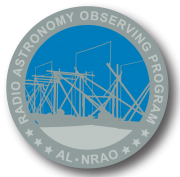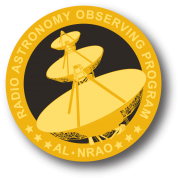Radio Astronomy Observing Program Coordinator:Steve Boerner |
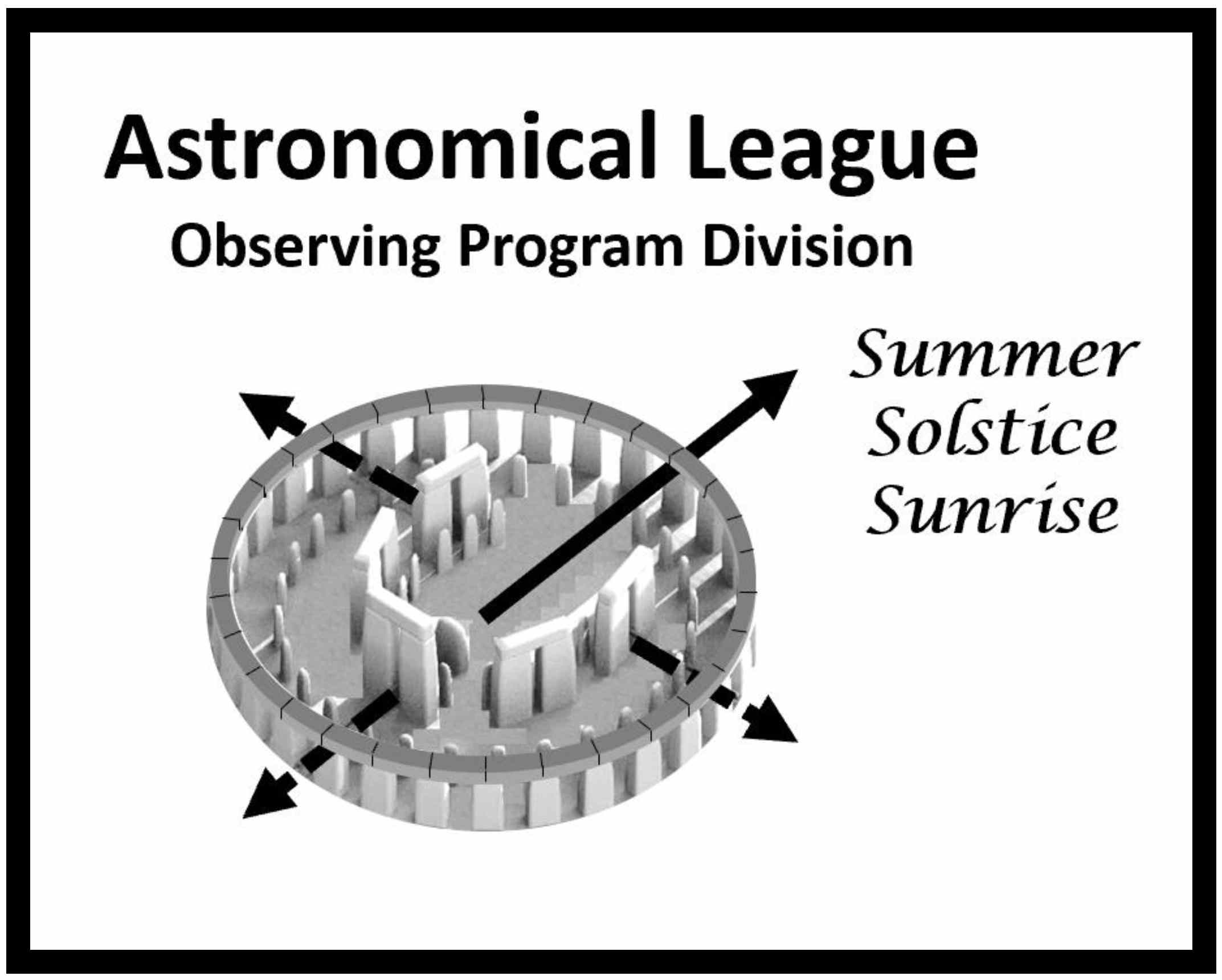 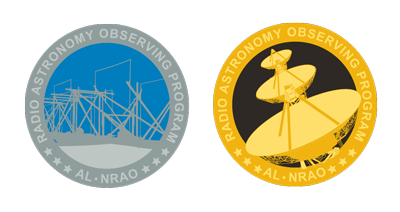 |
Introduction
|
Welcome to the Radio Astronomy Observing Program (RAOP). The Observing Program is a result of collaboration between the Astronomical League (AL) and the National Radio Astronomy Observatory (NRAO) with support from Associated Universities Inc. (AUI). Most of the Observing Programs in the Astronomical League are designed to encourage and promote looking at the heavens in the visible light part of the electromagnetic spectrum to which we are most accustomed to observing. There are however, many other parts of the electromagnetic spectrum to which our eyes are not able to observe. With a different type of sensor, we can observe in an entirely different realm, that of the radio spectrum. The Radio Astronomy Observing Program (RAOP) is designed to introduce and encourage the building of, and observing with, radio telescopes or other detectors. RAOP includes five types of observing that can be done with various radio equipment; Space Weather, the Sun, Planets, Meteors, and Galactic objects. At the same time, there are several different methods or instruments you can observe with: the Itty Bitty Radio Telescope, Radio Jove, FM radio, SID or Super SID, and Radio Telescope Dish Antennas. Although these are well-established instruments, however, applicants are not prohibited from designing and building their own original equipment to observe in the radio spectrum. The program will encourage diversity in observations and the use of different detection methods. For the purpose of this Observing Program, the applicant must be actively engaged in the manipulation of the equipment used to make the observations. Use of online streaming media from remote detectors is not acceptable as it is considered a more passive activity. |
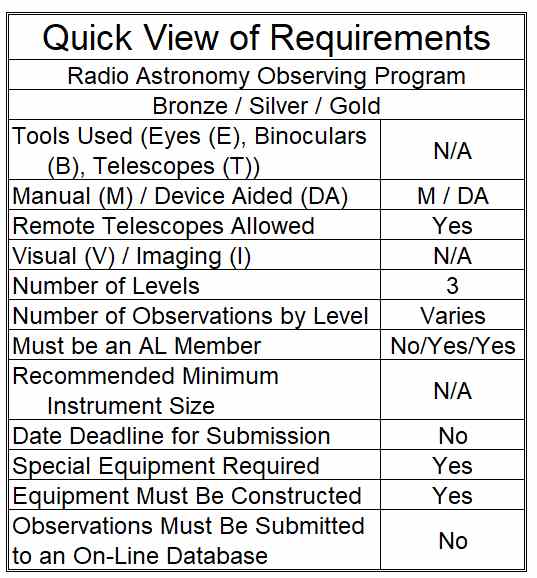 |
Requirements and Rules
Radio Source Options:
1. Observing Space Weather: Sudden Ionospheric Disturbance (SID) MonitorWhen energy from the Sun hits the ionosphere electrons are stripped away from their nuclei, creating the ionized region in the upper atmosphere. During periods of intense solar activity – solar flare, solar storm, or coronal mass ejection – the ionosphere reacts and we can detect changes in very low frequency (VLF) transmissions from Earth. SID can detect these changes providing the opportunity to monitor what we call space weather. The data can then be submitted to the Stanford Solar Center. If you are a high school or community college educator you can receive a SuperSID for free from the Society for Amateur Radio Astronomers. Others may purchase the unit. For more information, visit http://solar-center.stanford.edu/SID/docs/antenna.doc. Observations of the solar wind must include at least three (3) incidents which are at least 24 hours apart. For each observation, you should include a screen capture (or video) of your chart recording of the event. Include the date and time of the event, the call signs and frequencies monitored, and the location (latitude and longitude) of the instrument. Indicate on the charts the location of the events. Include still images with a written explanation of the set-up/equipment used, or a video with audio explaining the set-up of the equipment you used for the observation. You may also print out paper copies (except for video) of these to submit if you so choose. |
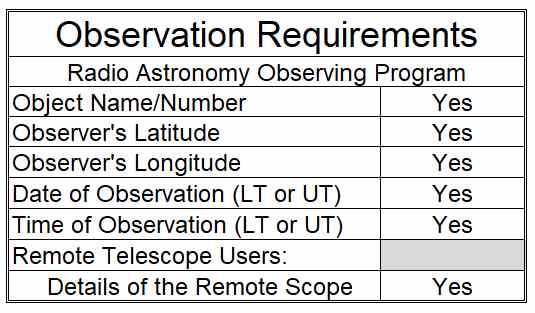 |
Note:
The Astronomical League has another Observing Program that deals with Space Weather. The Space Weather Observing Program uses a homemade magnetometer to detect changes in the Earth’s magnetic field. If you enjoyed this Observing Program and want to further investigate Space Weather, or if you enjoyed building your own detector, be sure to check out the Space Weather Observing Program: https://www.astroleague.org/space-weather-observing-program/
Additional Recommended Resources:
- SID Monitor Website – http://solar-center.stanford.edu/SID/sidmonitor/ – The website includes a wide variety of links that will help you understand space weather, and the instruments used to observe this phenomenon. In particular, there is a link to the SuperSID Manual. This is a very thorough manual that will help you understand the science behind space weather, as well as how to access a SID monitor, and how to construct an antenna. You can retrieve the manual at the following location: http://solar-center.stanford.edu/SID/Distribution/SuperSID/supersid_v1_1/Doc/SuperSIDManual_v1.pdf
- Building an SID Antenna –http://solar-center.stanford.edu/SID/docs/antenna.doc
- AAVSO – Instructions on how to build your own SID Receiver. (http://www.aavso.org/simple-easy-build-sid-receiver)
2. Observing the Sun: Itty-Bitty Telescope
The Sun generates radio waves that can be observed with the Itty Bitty Telescope (IBT). The IBT is a “starter” instrument that can be used to make observations of the sun, detect your own body radiation, or locate orbiting satellites. Visit http://www.gb.nrao.edu/epo/ibt.shtml for more information and directions on how to construct the telescope. (Cost ~$100 or less depending on materials purchased) Observations of the Sun must be made on three different occasions at least 24 hours apart. Still images along with an observing log, including the date and time of the observations, or video of the individual using the IBT to observe the Sun, should be submitted.
Additional Recommended Resources:
- Instructions on how to build the IBT:
- Youtube IBT examples
3. Observing Jupiter: Radio Jove
Listening to Jupiter – The Radio JOVE project is a project that allows you to learn about radio astronomy by building your own radio telescope from an inexpensive kit. Participants can also collaborate with other observers by submitting their data through interactions on the network. Visit http://radiojove.gsfc.nasa.gov/ for directions on building your own telescope and more information about participating in the project. (Cost ~$200) Observations must include at least one (1) burst, either L-burst or S-burst. Include a screen capture of your chart recording of the event. Include the date and time of the event, and the location (latitude and longitude) of the instrument. Include still images with a written explanation of the set-up and equipment used, or a video with audio explaining the set-up of the equipment used for the observation. You may also print paper copies to submit if you choose.
Additional Recommended Resources:
- Radio-Jupiter Central – This is a great resource from the folks at the Society of Amateur Radio Astronomers (SARA). Lots of background information about observing Jupiter, recordings of actual signals, and how to build the necessary equipment. (http://www.radiosky.com/rjcentral.html)
- Radio JOVE – RJ1.2 Antenna Kit Assembly Manual 2012 – (https://radiojove.gsfc.nasa.gov/radio_telescope/manuals/ant_manual.pdf)
- “Amateur Radio Astronomy Projects – Radio Signals from Jupiter” – Article by Jon Wallace (fjwallace@snet.net) and Richard Flagg (rf@hawaii.rr.com) – (http://www.radio-astronomy.org/pdf/qex/radio-jove-proof.pdf)
- Detecting Jupiter’s Radio Emissions by Mal Wilkinson and John Kennewell, July/August 1994 issue of the journal Southern Sky. —https://www.spaceacademy.net.au/spacelab/projects/jovrad/jovrad.htm (Includes QBASIC source code that predicts when events may occur)
4. Observing Meteors
As meteors strike the Earth’s atmosphere the collision will generate ionic disturbances that will deflect signals originating from distant radio stations. A high-quality FM receiver can be used to detect meteors striking the Earth’s atmosphere. Meteor Reflection Observations – Radio meteor scattering occurs when radio waves transmitted from locations on Earth are reflected off of meteor trails. The use of this technique to monitor meteor showers is increasing in popularity. For more information on the project visit http://www.imo.net/radio and https://livemeteors.com Members from Virginia to Maine should be able to duplicate his efforts. (Costs will vary) Observations must include at least ten (10) events. The applicant should submit a log including the date, time, and radio frequency at which each meteor was observed, as well as an audio or video recording of each event.
Additional Recommended Resources
- American Meteor Society – Radio Observing – http://www.amsmeteors.org/ams-programs/radio-observing/
- Using Software Designed Radio (SDR) to Observe Meteors – (http://www.rtl-sdr.com/meteor-reflection-observations-with-rtl-sdr/)
- Receiving Meteor Reflections Using Low bandDTV Transmitter Pilot CarriersBy Dennis Condron – K0LGI —http://www.roswellmeteor.com/Receiving%20Meteor%20Reflections%20Using%20DTV%20Transmitters.pdf
5. Observing Galactic/Extragalactic Radio Sources
Our galaxy contains many radio-emitting objects that can be observed with Radio Telescopes. Most are too faint in radio to be observed with small radio telescopes. You may use your own or someone else’s radio telescope to make observations of sources within the Milky Way Galaxy or beyond the Milky Way. You may use online or collaborative resources, but you must obtain your own unique observations, and be actively engaged in the process.
Sources may include but are not limited to:
- Cygnus A, Taurus A, Cassiopeia A, Sagittarius A, or a cross section of the Galactic Plane
- Observe Hydrogen in the Galactic Plane – Thanks to SDR, it is now possible to observe the hydrogen in the galactic plane in both continuum and spectral modes using a dish less than 1 meter in diameter. Marcus Leech with Science Radio Laboratories, Inc. has a great article titled “A 21cm Radio Telescope for the Cost-Conscious” that explains the process. Visit http://www.rtl-sdr.com/rtl-sdr-for-budget-radio-astronomy/, or other resources below for more information. (Cost ~$200)
- Green Bank 40-Foot Radio Telescope or the 20 Meter Telescope – The Green Bank Observatory in Green Bank-West Virginia will make available telescopes for use by student groups, as well as other amateur science groups and organizations (scouts, 4-H, astronomy clubs, etc.). For more information, visit https://science.nrao.edu/facilities/gbt/facilities/gbt/other-telescopes/40foot, and https://greenbankobservatory.org/visit/ This is the site of the yearly Green Bank StarQuest star party where attendees can choose to be trained and are allowed to operate the 40 radio telescope.
- Goldstone Apple Valley Radio Telescope (GAVRT) – GAVRT now offers online training free of charge. The program allows educators and students to operate a 34-meter (112-foot) radio telescope remotely via the Internet. GAVRT teaches students to use radio astronomy; to control a huge antenna, and to collect science data from objects in the Universe. In addition, the program provides curriculum and supports classroom implementation. GAVRT uses the Internet to connect students to Mission Control and the antenna. Students are actively involved in handling data for real science applications. Visit http://www.lewiscenter.org/gavrt/ for more information.
Ten (10) observations must be made of at least three (3) different objects. The same object may be observed on different days. These observations may be made using equipment that you may or may not have built. Remote operation of radio telescopes is acceptable for the purposes of this requirement, as long as the applicant is an active participant manipulating the telescope, as opposed to a passive observer, in the collection of data. Observations must include:
- Date and Time
- Observing Location (and name if an established radio telescope was used)
- Beam Width
- Object Name and Coordinates, any relevant information and description of results with pictures.
- If it was a self-built radio telescope a description of the building process and pictures at various stages of construction should be included.
Additional Recommended Resources:
- A 21cm Radio Telescope for the Cost-Conscious – (https://docplayer.net/20744323-A-21cm-radio-telescope-for-the-cost-conscious-marcus-leech-science-radio-laboratories-inc.html)
Additional Radio Astronomy Resources:
Observing Space Weather
- Society of Amateur Radio Astronomers – http://www.radio-astronomy.org/
- Ask an Astronomer – https://blogs.nrao.edu/askanastronomer/ask-a-question/
- Tracking Solar Flares – Try searching archived data to find a solar flare. (http://cse.ssl.berkeley.edu/segway/WSW_files/StanfordSIDflares/activity.html)
The Awards:
The Bronze certification is available to anyone; membership in the AL is not required. The Silver and Gold certifications are available only to members of the Astronomical League, either through their local astronomical society or as members at large. If you are not a member and would like to become one, check with your local astronomical society, search for a local society on the Astronomical League Website (click here), or join as a Member-at Large (click here).
There are three levels of Awards in the Radio Astronomy Observing Program; Bronze, Silver, & Gold. There are five categories of observations 1) Space Weather, 2) the Sun, 3) Jupiter, 4) Meteors, and 5) Galactic/Extragalactic Radio Sources. In general terms, completing one category will earn the Bronze level, two different categories will earn the Silver level and four different categories will earn the Gold level. Certificates are awarded for all levels, however, pins are awarded for the Silver and Gold levels only. To earn a certificate or pin, one must be actively engaged in the manipulation of the equipment used to make the observation. The use of online streaming media is not acceptable for the purpose of this program.
|
Bronze Level (no pin) |
The Bronze Level is intended to introduce Radio Astronomy with a minimum of cost and equipment. Each applicant must build or assemble one Radio receiver or antenna device and observe one of the radio sources listed above. The device may be built by an individual or by a small group of no more than three people, however, all individuals must make their own observations. You must submit all required documentation specified above for any observation to be considered. You do not need to be a member of the Astronomical League to earn a Radio Astronomy Observing Program Bronze certificate. Completion will earn the Bronze certificate which will be emailed to you for printing. |
|
Silver Level
|
The Silver Level is intended to take the radio astronomer to a higher level of experience in the Radio Spectrum. In addition to the Bronze level requirements, the applicant must observe a second type of radio source in the radio spectrum using a different instrument than used previously. You may do this in combination with the Bronze level by submitting observing reports for the two different types of radio sources using the two different types of instruments, one of which, you must have personally built or assembled. Completion of two sets of different observations outlined in the five categories above, using at least two different instruments will earn the Silver certificate and pin. These will be sent to you through the mail. |
|
Gold Level
|
The Gold Level is intended to take the Radio Astronomer to an advanced level of experience that includes a broad variety of observing and a more sophisticated level of observing. To obtain this level, the applicant must have met the requirements of the Bronze and Silver levels and:
|
Upon verification of your submission and of your active membership in the Astronomical League, your recognition (certificate, pin, etc.) will be sent to you or to the awards coordinator for your society, as you specified. Your name will also appear in an upcoming issue of the Reflector magazine and in the Astronomical League’s online database. Congratulations. Good luck with your next observing challenge.
Submitting for Certification
|
Submissions for the Radio Astronomy Observing Program should be made to the Observing Program Coordinator. An office of your astronomy club or the awards coordinator may assist and facilitate a part of the process but determination of the successful completion of the award will be made by the Program Coordinator. You must submit sufficient evidence that you have completed the necessary requirements for each award level. This may include, but is not limited to, observing logs, computer screenshots, data plots, pictures or video of you engaged in instrument construction or making observations. |
 |
Note: Evidence of yourself building the equipment or making observations can be submitted by emailing video files less than 10MB in one of the five most popular video formats ( AVI, FLV, WMV, MOV, MP4) or uploading to one of the most popular sharing sites ( YouTube, Vimeo, Flicker, Vevo, Dailey Motion, Veoh, Metacafe). Under no circumstance should a single email sent to the Program Coordinator be larger than 10 MB.
Provide Links or files to the Observing Program Coordinator using this form (feel free to cut and paste into your email):
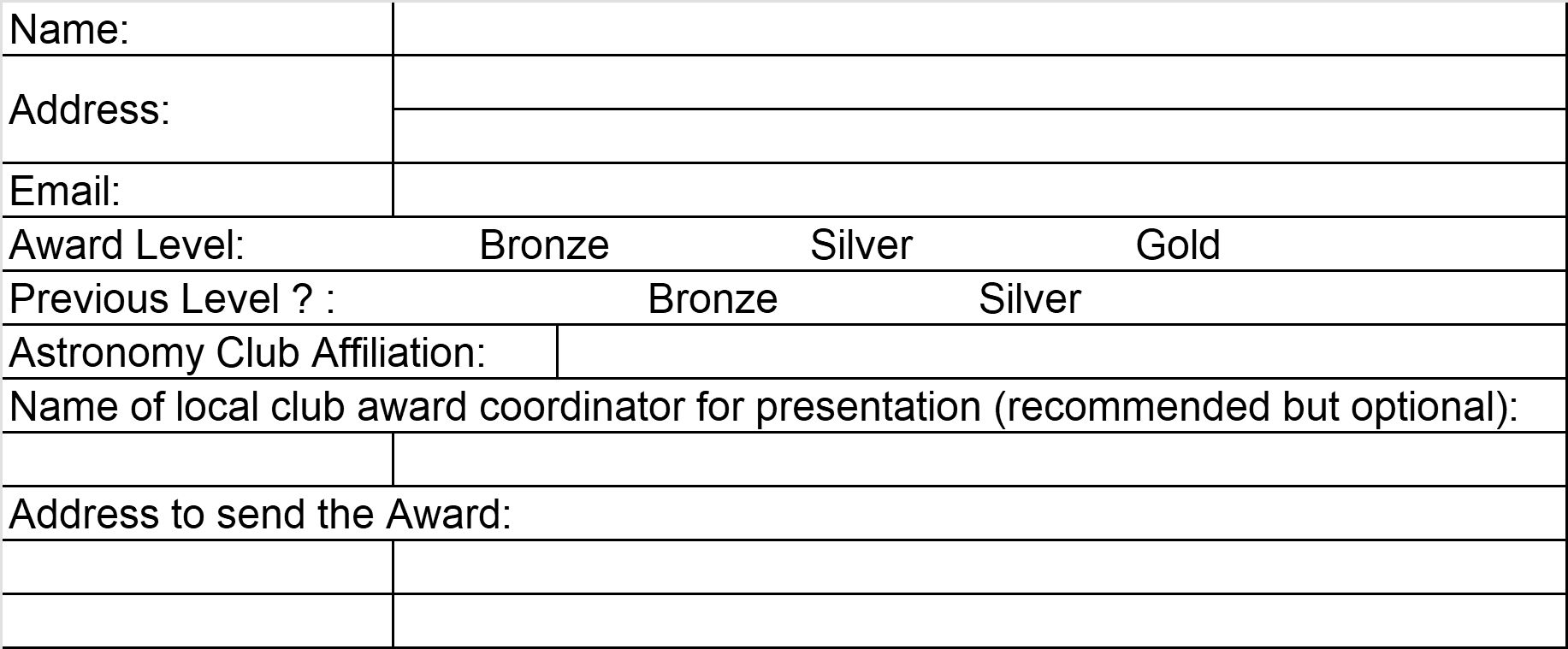
Links to your submissions for:
- Observing Space Weather
- Observing Jupiter
- Observing Meteors
- Observing the Sun
- Observing Galactic Radio Sources/Extragalactic Radio Sources
- And files or images attached
Please do not send your original logs, records, or images as they will not be returned.
If you have any possible additions to this list, please contact the Coordinator.
Radio Astronomy Observing Program Coordinator:Steve Boerner |
Notes:
Acknowledgements:
We would like to recognize the effort and dedication of William Bogardus, former Astronomical League President, for authoring and initially coordinating the Radio Astronomy Observing Program.
RAOP Links to National and State Learning Standards for Educators and Parents:
The Federal Science, Technology, Engineering, and Mathematics 5-Year Strategic Plan calls for the Nation to “increase and sustain youth and public engagement in STEM by supporting a 50 percent increase in the number of U.S. youth who have an authentic STEM experience each year prior to completing high school.” The RAOP works to address this national priority.
(http://www.whitehouse.gov/sites/default/files/microsites/ostp/stem_stratplan_2013.pdf)
In addition to amateur astronomers, upper elementary school through college educators are encouraged to take part in the RAOP program with their students as well. Our goal is to introduce this new program into elementary, middle, and high school, as well as college environments through project-based learning. The RAOP will introduce learners of all ages to a variety of earth, space, physics, and engineering concepts, as well as science and engineering practices and processes. Listed below are a few examples of how educators can link learning from the RAOP directly to the Next Generation Science Standards (NGSS). Links to NGSS standards can be found at http://www.nextgenscience.org.
- 4-PS3-2 – Make observations to provide evidence that energy can be transferred from place to place by sound, light, heat, and electric currents.
- 4-PS3-4 – Apply scientific ideas to design, test, and refine a device that converts energy from one form to another.
- MS-PS3-3 – Apply scientific principles to design, construct, and test a device that either minimizes or maximizes thermal energy transfer.
- MS-ETS1-3 – Analyze data from tests to determine similarities and differences among several design solutions to identify the best characteristics of each that can be combined into a new solution to better meet the criteria for success.
- HS-PS4-5 – Communicate technical information about how some technological devices use the principles of wave behavior and wave interactions with matter to transmit and capture information and energy.
- HS-ESS1-2 – Construct an explanation of the Big Bang theory based on astronomical evidence of light spectra, motion of distant galaxies, and composition of matter in the universe.
NOTE: Depending on how the activities are structured, links can also be made to the Math and Language Arts Common Core State Standards (http://www.corestandards.org/), as well as the ISTE Standards (https://www.iste.org/standards).
Links:
Additional Radio Astronomy Resources:
- Society of Amateur Radio Astronomers – http://www.radio-astronomy.org/
- SARA Store (Society of Amateur Radio Astronomers) – https://www.radio-astronomy.org/store/
- Ask an Astronomer – https://blogs.nrao.edu/askanastronomer/ask-a-question/
- Tracking Solar Flares – Try searching archived data to find a solar flare. (http://cse.ssl.berkeley.edu/segway/WSW_files/StanfordSIDflares/activity.html)




